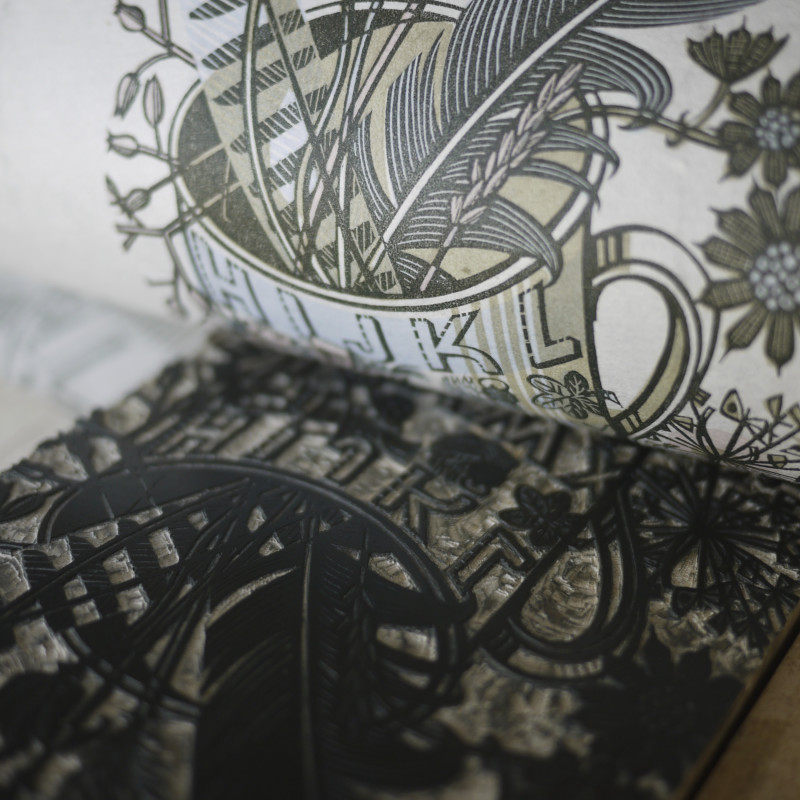RELIEF
An impression produced by applying ink to the surface of a printing plate. The block's uncut surface is the area which is inked and printed; cut (or indented) areas show as the paper colour.
LINOCUT
A print produced from a linoleum block, onto the surface of which the artist draws then cuts an image using fine steel gouges. The areas of the block to be inked and printed are left uncut (in relief) while the areas of the design not intended to take the printing ink are cut away. When the cutting is complete, the block is inked and printed either by hand or foot pressure or by printing in a relief (platen) printing press. Although linoleum is a floor covering that dates to the 1860s, the linocut printing technique was used first by the artists of Die Brücke in Germany between 1905 and 1913.
WOODCUT
This is perhaps the oldest printing process, first appearing over 1,000 years ago in China (c800 AD). An image is drawn onto a block of side-grain wood (plank). The artist then cuts away areas of the block that they do not want to take ink leaving, in relief, the intended image. Ink is then dabbed or rolled onto the block’s remaining uncut parts and the inked block is pressed onto paper. Printing can be done in a press or by hand or foot pressure, or by using hand-held burnishing implements such as a simple wooden spoon or a Japanese printing baren. The printed result is a mirror image of the design on the block. Tools used are usually steel gouges (U- or V-shaped cutting edges) or specialist cutting knives.
WOOD ENGRAVING
Wood engraving: a relief print produced from a block of end- grain wood (traditionally a very slow-growing wood such as boxwood), into the surface of which the artist engraves a design, using fine, steel, cutting tools.
When the cutting is complete, he/she applies a thin layer of printing ink. He/she then places a sheet of smooth paper, face down, onto the inked block, and takes a printed impression either by hand- rubbing the back of the paper with a spoon, or by using a platen press. This technique involving the engraving of end-grain boxwood, using tools traditionally associated with metal engraving, is credited to Thomas Bewick in Newcastle, England, in 1768. The technique differs from woodcut/woodblock methods both in the tools used and in the fact that the printing matrix is end- grain rather than long-grain wood and thus, unlike in woodcut/woodblock prints, the wood grain is not a characteristic of the print. The same technique is used today both on end-grain wood and on man-made printing blocks designed to simulate the character of end-grain wood.
COLLAGRAPH
A print made from a collage block. Collagraphs were first made in the 1 9th century. During the early 20th century, artists such as Picasso, Braque and Klee used found objects to create artworks, which inspired printmakers to adopt similar practices by collaging everyday items onto printing plates.
Collagraph plates are often made from thick card but MDF, Perspex and metal are also used onto which found materials are glued and modelling pastes and powders, sand and grit can also be applied to create textures capable of holding printing ink.
